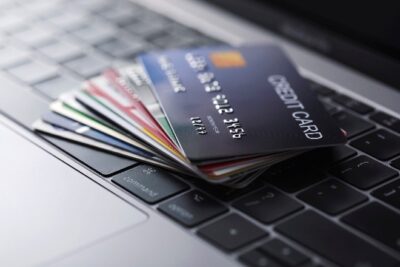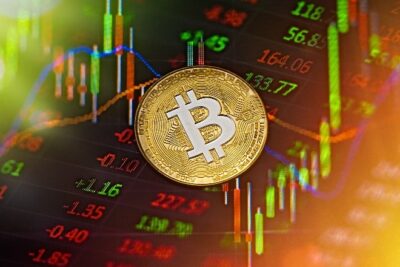The Evolutional History of Money
The idiom “Money makes the world go round” is popular phrase to describe the importance of money in humanity. This blog is compiled to illustrate how this entity started to play a part in humanity’s social fabric from time immemorial i.e., how early humans developed an enterprising system to get something from an individual in exchange for something that the giving party seemed of value. Money is the driving force to sustain life’s dependencies. Over millions of years that give and take phenomenon has evolved from physical pieces of value, barter, coins, paper currency, credit cards, mobile transaction to the current state of crypto currency.
Money, whether it’s represented by a seashell, a metal coin, a piece of paper, or a string of code electronically mined by computer, makes the world go round. Its total global value currently (2024) is estimated to be around $418 trillion.
A View into the Pre-Historic Commerce Dealings
Due to very limited or lack of any historical records about commerce for millions of years, researches have theoretically categorized the pre-historic commerce dealings as follows:
Barter System: The predominant form of trade in prehistoric times was known as the barter system, where goods and services were exchanged directly for other goods and services without the use of money. Bartering was a direct trade of goods and services; for example, a farmer may have exchanged a bushel of wheat for a pair of shoes from a shoemaker or if one was exchanging an ax as part of an agreement in which the other party was to provide for cooking and heating supplies for the living space. These arrangements took extended periods of time due to overcoming challenges such as lack of communication medium, large distances between the sourcing parties, time to source the sought after materials, overcoming hurdles due to natural phenomena like evading through the expanse of water, desert, mountains and so on.
Natural Resources: Prehistoric commerce often revolved around the exchange of natural resources such as flint, obsidian, shells, and metals like copper and later bronze. These materials were valuable for toolmaking, crafting, and adornment.

Regional Trade Networks: Archaeological evidence suggests that prehistoric societies engaged in long-distance trade networks, with goods traveling significant distances. For instance, obsidian from Anatolia (modern-day Türkiye) has been found in archaeological sites across the Mediterranean, indicating extensive trade networks even in ancient times.

Social and Ritual Exchange: Commerce in prehistoric societies was not just about economic transactions but also served social and ritual purposes. Gift-giving and exchange played essential roles in establishing and maintaining social relationships, forging alliances, and demonstrating status within the community.
Transition from Barter System to Currency
Slowly, a type of currency (a medium of exchange for goods and services) developed over the centuries that involved easily traded items like animal skins, salt, and weapons. These traded goods served as the medium of exchange (even though the value of each of these items was still negotiable in many cases). This system of trading spread across the world and still survives today in some parts of the globe. In early August 2021, Chinese archaeologists with the State University of Zhengzhou announced that they had discovered the world’s oldest known, securely dated coin minting site. A mint is a facility where currency was created. Sometime around 640 BCE, this facility, located in Guan Zhuang in Henan Province, China, began striking spade coins, one of the first standardized forms of metal coinage.
First Official Currency Is Minted
The coins were made from electrum, a mixture of silver and gold that occurs naturally, and the coins were stamped with pictures that acted as denominations. In the streets of Sardis, in approximately 600 BCE, a clay jar might cost you two owls and a snake.
Lydia’s currency helped the country increase both its internal and external trading systems, making it one of the richest empires in Asia Minor. Today, when someone says, “as rich as Croesus”, they are referring to the last Lydian king who minted the first gold coin.

Transition to Paper Currency
During 1260 CE, the Yuan dynasty of China moved from coins to paper money. By the time Marco Polo—the Venetian merchant, explorer and writer who traveled through

through Asia along the Silk Road between 1271 and 1295 CE—visited China in approximately 1271 CE, the emperor of China had a good handle on both the money supply and its various denominations. In fact, in the place where modern American bills say, “In God We Trust,” the Chinese inscription at that time warned: “Those who are counterfeiting will be beheaded.”
Parts of Europe were still using metal coins as their sole form of currency until the 16th century. Colonial acquisitions of new territories via European conquest provided new sources of precious metals and enabled European nations to keep minting a greater quantity of coins.
However, banks eventually started using paper banknotes for depositors and borrowers to carry around in place of metal coins. These notes could be taken to the bank at any time and exchanged for their face value in metal—usually silver or gold—coins. This paper money could be used to buy goods and services. In this way, it operated much like currency does today in the modern world. However, it was issued by banks and private institutions, not the government, which is now responsible for issuing currency in most countries.
The first paper currency issued by European governments was actually issued by their colonial governments in North America. Because shipments between Europe and the North American colonies took a long time, colonies often ran out of cash. Instead of going back to a barter system, the colonial governments issued IOUs that traded as currency. The first instance was in Canada (then a French colony). In 1685, soldiers were issued playing cards denominated and signed by the governor to use as cash instead of coins from France.
The Emergence of Currency Wars
The shift to paper money in Europe increased the amount of international trade that could occur. Banks and the ruling classes started buying currencies from other nations and created the first currency market. The stability of a particular monarchy or government affected the value of the country’s currency, and thus, that country’s ability to trade on an increasingly international market.
The competition between countries often led to currency wars, where competing countries would try to change the value of the competitor’s currency by driving it up and making the enemy’s goods too expensive, by driving it down and reducing the enemy’s buying power (and ability to pay for a war), or by eliminating the currency completely.
Mobile Payments
The 21st century has given rise to two novel forms of currency: mobile payments and virtual currency. Mobile payments are money rendered for a product or service through a portable electronic device, such as a cellphone, smartphone, or tablet device.
Mobile payment technology can also be used to send money to friends or family members. Increasingly, services like Apple Pay and Google Pay are vying for retailers to accept their platforms for point-of-sale payments.

Crypto or Virtual Currency

Bitcoin, released in 2009 by the pseudonymous Satoshi Nakamoto, quickly became the standard for virtual currencies. All of the world’s bitcoin, as of in early 2024, were worth around $2.75 trillion, Virtual currencies have no physical coinage. The appeal of virtual currency is that it offers the promise of lower transaction fees than traditional online payment mechanisms do and is operated by decentralized authorities, unlike government-issued currencies.
